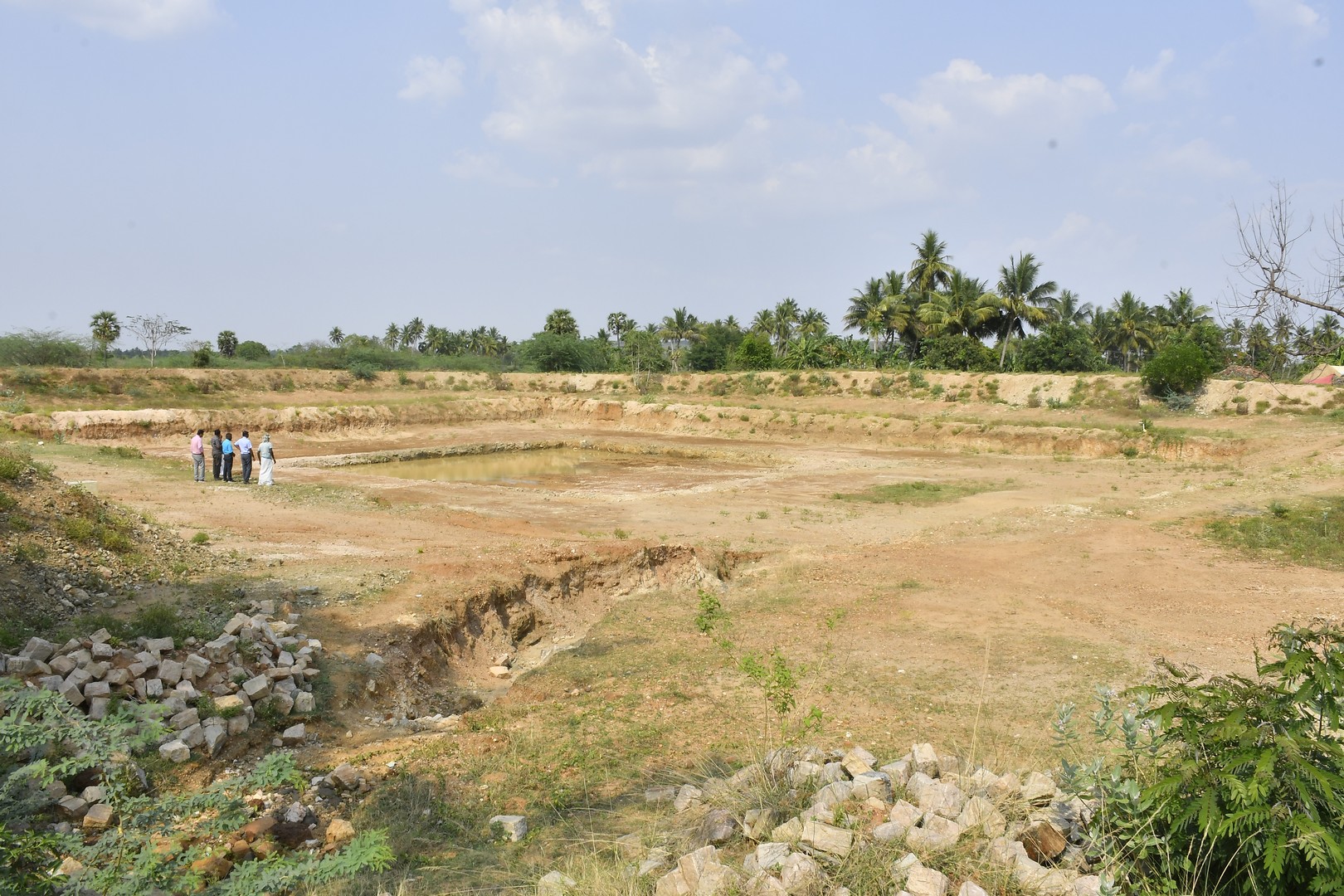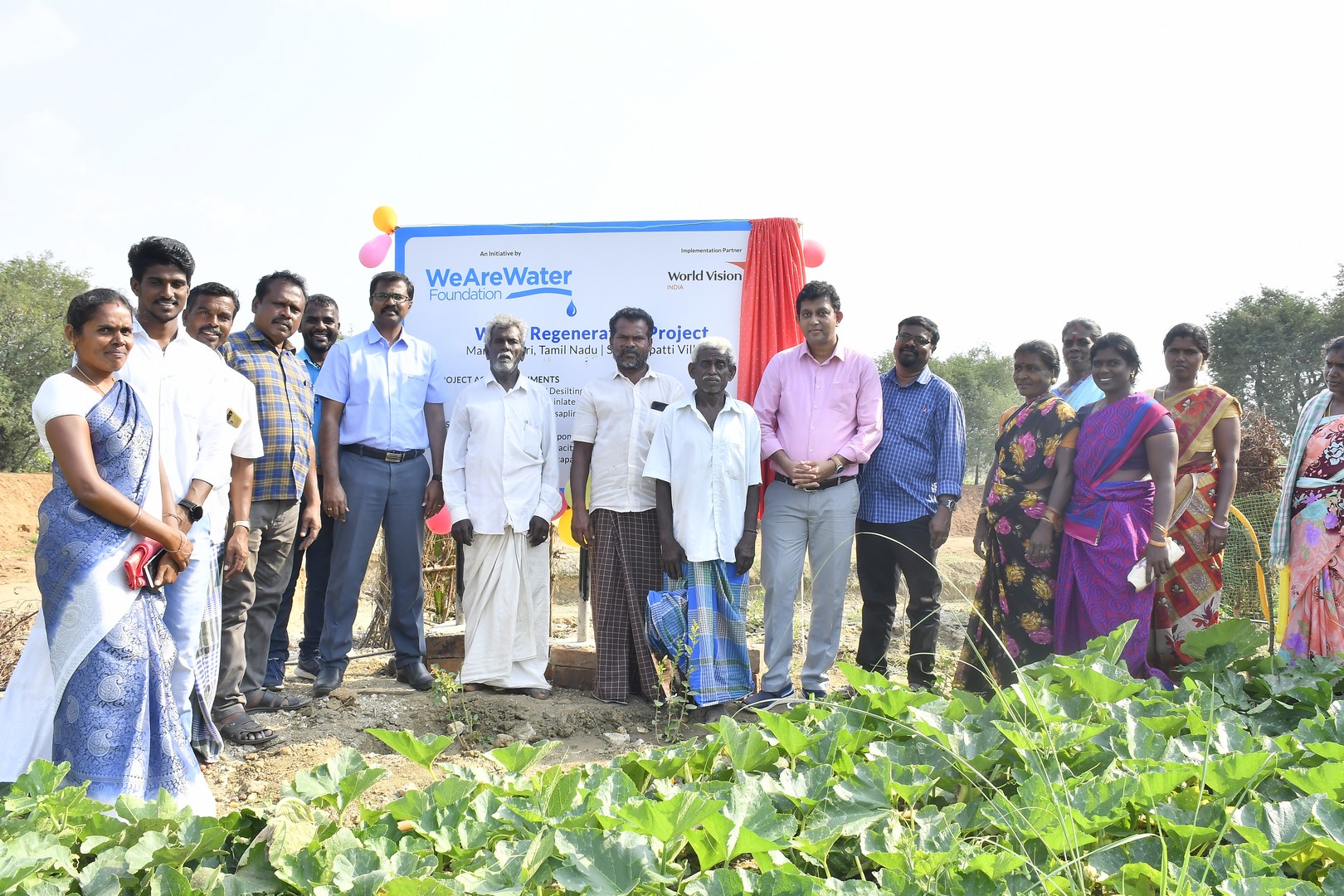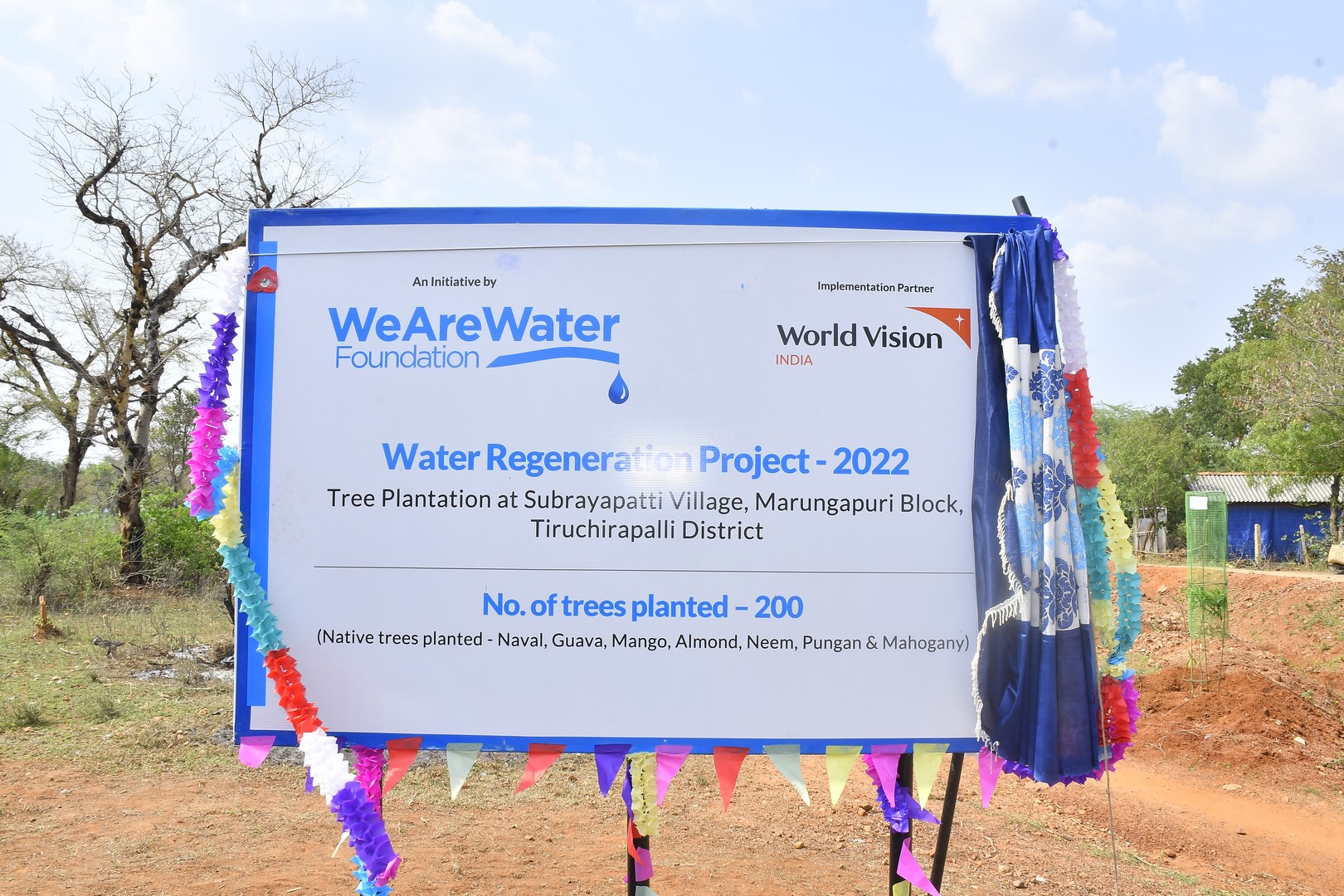Marungapuri, District of Tiruchirappalli, Tamil Nadu, India
In collaboration with

March 2022 – December 2022
Recover water in the aquifers by cleaning the adjacent ponds and restoring the vegetation cover. Train communities in water conservation and proper soil management in collaboration with the Government.
Objectives
- Improve water availability during the hotter seasons and mitigate migration.
- Assist people in practicing efficient water use through community collaboration and knowledge of water resource conservation techniques.
- Enhance water security and build capacity to address the impact of climate change.
Beneficiaries
7,500 directs
Residents of the communities in Marungapuri (2,763 women and 1,171 children under 15).
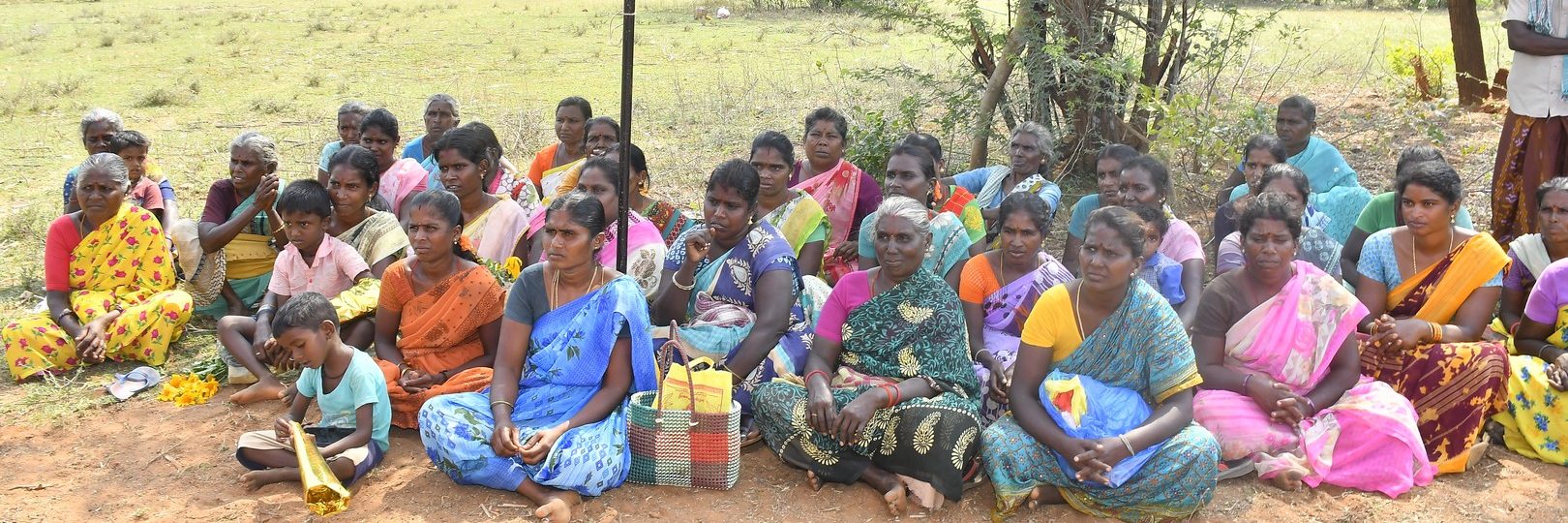
On the ground
Depletion of aquifers and high vulnerability to drought.
The residents of Prampatti, Subbarayappatti, Medukadu, Thenur, Sokkampatti, and Madhukkaranpatti, villages in Marungapuri, have to walk several kilometers to access drinking water for drinking, cooking, and personal hygiene. In addition, it is highly challenging for them to provide water for their livestock, which is affecting their livelihoods.
The groundwater level has dropped below 300 meters in this district of Tamil Nadu state, in southern India. The monsoon climate provides two rainy seasons: the southwest monsoon from June to September and the northeast monsoon from October to December. However, these rains have been decreasing over the past three years.
The small ponds created with dams, the primary water source for the villages, dry up during the hotter months (April, May, and June) and cannot retain enough water during the rainy seasons.
Approximately 85% of the population directly depends on agriculture for their subsistence. Droughts and periods of water scarcity have led to increased migration to larger cities.
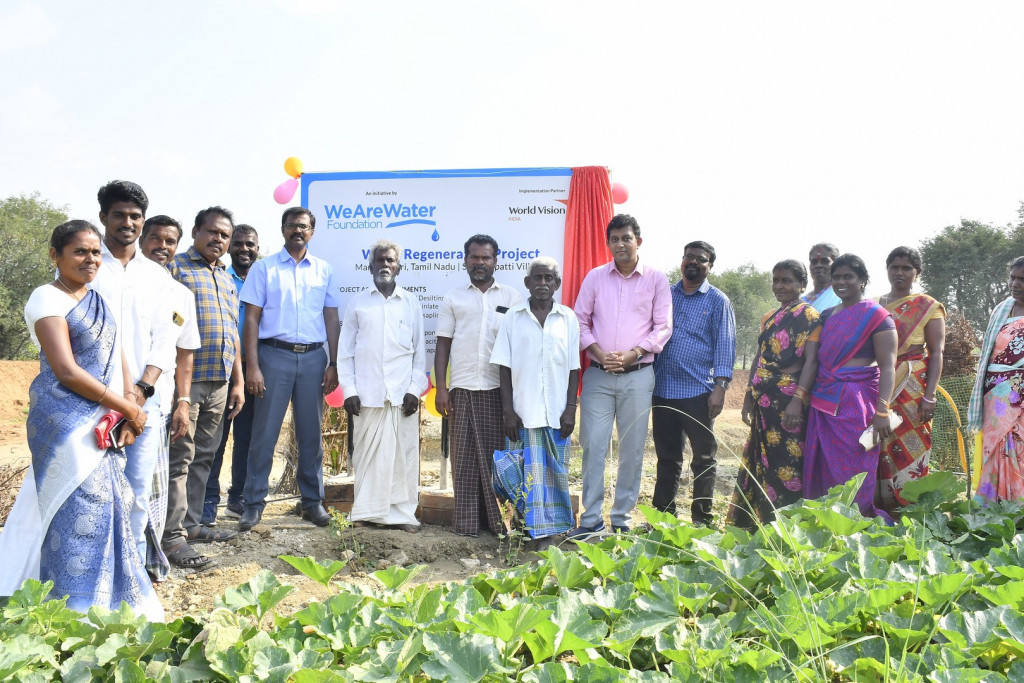
In detail
The project is an action plan for drought mitigation based on renovating the ponds in the area, increasing their depth and capacity to retain water during the rainy seasons, and preventing water loss during peak summer heat. The ponds have been desilted, and their beds have been cleaned and leveled, removing accumulated mud or sediments. The bunds have been reinforced to enhance their strength and water retention capacity, and excavation has been done to increase depth and capacity. The adjacent embankments have been strengthened to ensure the stability of the water body during heavy floods.
Before the intervention, the combined capacity of the six ponds was 24,105 m3; the project has succeeded in increasing it to 39,152 m3. Overall, the capacity of the ponds has been increased by 15,047 m3.
Simultaneously, around 1,000 trees of native varieties have been planted in the watershed areas surrounding the ponds to enhance the green cover, reduce soil erosion, and mitigate flash floods.
The project is based on forming the Water User Management Committee (WMUC) and training communities in water and soil conservation. It thus encourages improved practices on efficient water use, budget management, and rights under various government schemes.
Perspectives on Sustainability
Training on water-related topics forms the foundation for ensuring the sustainability of the initiatives. Therefore, the project was accompanied by a Rainwater Harvesting Education Program, which engaged over 7,600 men and 12,450 women in awareness courses across five villages.
Additionally, there were five rallies for school children and villagers, with the participation of 3,678 men and 8,006 women. Information, Education, and Communication (IEC) materials were distributed to every household in all selected villages.
Training programs were also implemented on water conservation, leak repair, and social behavior change related to water consumption. These initiatives aim to empower the communities with the knowledge and skills to sustainably manage their water resources and promote responsible water usage practices.


